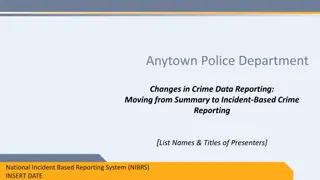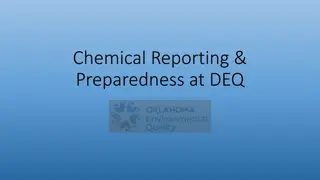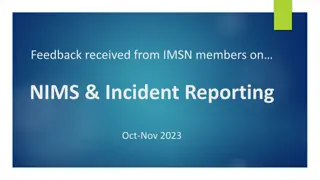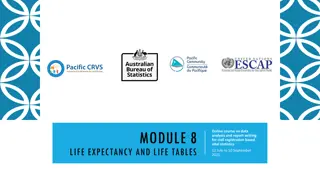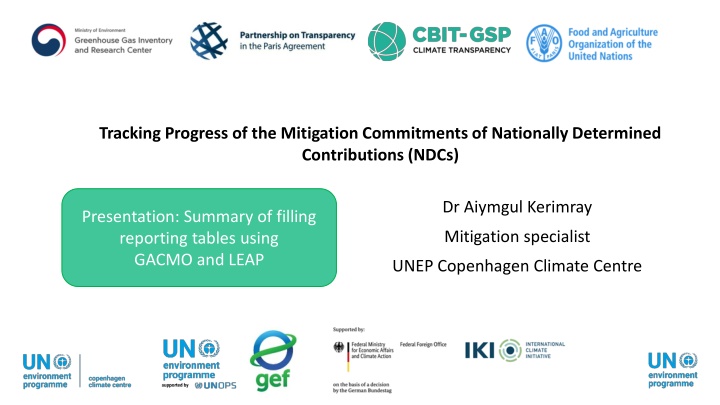
Tracking Progress of Mitigation Commitments in NDCs Using GACMO and LEAP Models
Explore how GACMO and LEAP models assist in defining target levels for Nationally Determined Contributions (NDCs) and projecting GHG emissions reduction scenarios. Learn about the significance of sectoral targets, MACC/MARC curves, and mitigation policies in achieving climate goals.
Download Presentation

Please find below an Image/Link to download the presentation.
The content on the website is provided AS IS for your information and personal use only. It may not be sold, licensed, or shared on other websites without obtaining consent from the author. If you encounter any issues during the download, it is possible that the publisher has removed the file from their server.
You are allowed to download the files provided on this website for personal or commercial use, subject to the condition that they are used lawfully. All files are the property of their respective owners.
The content on the website is provided AS IS for your information and personal use only. It may not be sold, licensed, or shared on other websites without obtaining consent from the author.
E N D
Presentation Transcript
Tracking Progress of the Mitigation Commitments of Nationally Determined Contributions (NDCs) Dr Aiymgul Kerimray Presentation: Summary of filling reporting tables using GACMO and LEAP Mitigation specialist UNEP Copenhagen Climate Centre
GACMO and LEAP can GACMO and LEAP can support to define the support to define the target level for the NDC target level for the NDC GACMO/LEAP models can be useful to identify NDC target levels: Sectoral targets consistent with the economy-wide targets MACC/MARC curves can be useful to select the set of mitigation options Marginal Abatement Cost Curve (MACC) Summary Reports (sei.org) Energy system analysis with a focus on future energy demand projections: The case of Norway - ScienceDirect
CTF tables for the electronic reporting of the information necessary to track progress made in implementing and achieving NDCs NDC definition and methods Appendix: Description of a Party s NDC Table 1: Description of selected indicators Table 2: Definitions needed to understand the NDC Table 3: Methodologies and accounting approaches Current mitigation status and tracking progress Table 4: Tracking progress Table 5: Mitigation policies, measures, actions and plans (Achieved) Table 6: Inventory summary Projections and expected emissions reduction Table 5: Mitigation policies, measures, actions and plans (expected) Table 7: Projections with measures scenario Table 8: Projections with additional measures scenario Table 9: Projections without measure scenario Table 10: Projections of key indicators Table 11: Key underlying assumptions and parameters of projections Response measures Table 12. Information necessary to track progress on the implementation and achievement of the domestic policies and measures implemented to address the social and economic consequences of response measures
Projections of GHG emissions GACMO: GHG emissions projections by sectors CO2 emissions Other Gases Two scenarios: BAU scenario, mitigation scenario Implemented and adopted policies and measures With measures (shall) CTF tables 7, 8, 9 Projections Implemented, adopted and planned policies and measures With additional measures (may) (with and without LULUCF) LEAP: Excludes all policies and measures after the cut-off date Without measures (may) GHG emissions projections by sectors Projections by gases (user defines the selection of the gases) Number of scenarios defined by the user
CTF Table 10. Projections of key indicators LEAP GACMO Table 1. Table 2. Table 4. Table 10. Projections of key indicators Description of selected indicator Definitions needed to understand NDC Track progress
Assessment of the impact of the individual policies and Assessment of the impact of the individual policies and measures measures GACMO, LEAP CTF Table 5. Mitigation policies, measures, actions and plans CTF Table 5. Mitigation policies, measures, actions and plans Expected Objectives Estimates of GHG emissions reductions Mitigation policy and measure Sectors affected Gases affected Achieved GACMO and LEAP can be used to estimate individual effect of mitigation policy
Summary of filling reporting tables using GACMO and LEAP Results of the models Input data to the model CTF Table 5. Mitigation policies and measures (emission reduction) CTF Table 8. Projections with additional measures scenario CTF Table 9. Projections with additional measures scenario CTF Table 11. Key underlying assumptions used for projections CTF Table 7. Projections with measures scenario CTF Table 10. Projections of key indicators CTF Table 3. Methodologi es GACMO, LEAP can support filling in several CTF tables
Thank you! Aiymgul Kerimray aiymgul.kerimray@un.org









